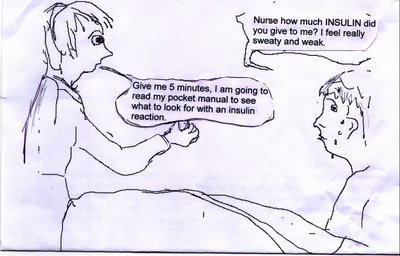PERNICIOUS ANEMIA

For more helpful clinical information , simply click on the links:
Clinical Videos for Nurses and
The Clinical Setting Step by Step, chapter 13
and enjoy learning.





 Updated 7 /25
Updated 7 /25 Updated 10/24
Updated 10/24 Updated 8 /25
Updated 8 /25
 Chronic Obstructive Pulmonary Disease (COPD) is characterized by
Chronic Obstructive Pulmonary Disease (COPD) is characterized by





 Updated 10/25
Updated 10/25
In the above image, a patient who has been confined to bed
suddenly develops pain in the calf. The nurse seems to be
unaware how to assess the situation correctly.
Helpful hints:
- :Suspect DVT if the patient who has been confined to bed develops
calf pain
- Assess the involved calf and document findings
- It is also advisable to check breath sounds and assess breathing
- notify MD
 A patient who is confined to bed for a prolonged period of time,
A patient who is confined to bed for a prolonged period of time, Here are some diagnostic tests that are done frequently.
Follow the links below:
1. Chest X ray
2. CAT scan
3. EKG
4. MRI scan
5. Ultrasound
6. Echocardiogram